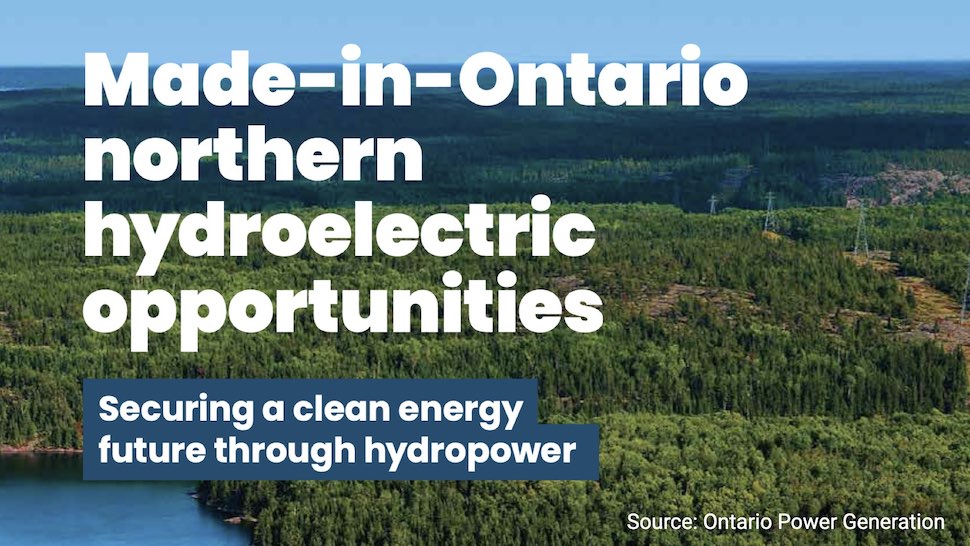
Indigenous
News
News
Energy & Power
Generation
4000 to 5000 MW of waterpower remains untapped in Ontario
March 10, 2023 | By Anthony Capkun

March 10, 2023 – A new report shows that 4000 MW to 5000 MW of waterpower is available in Ontario, and can make a significantly increased contribution to toward helping the province meet its emerging electricity needs and decarbonization objectives.
“This report will serve as a foundation for the development of a strategy to realize the significant electricity and broader socio-economic benefits of expanding hydroelectric generation—not only in the north, but across the province,” said Paul Norris, president, Ontario Waterpower Association.
The report, “Made-in-Ontario northern hydroelectric opportunities”, was prepared by Ontario Power Generation, with input from OWA and Indigenous communities. It focuses on new waterpower development opportunities in Northern Ontario, where 3000 MW to 4000 MW of that waterpower potential is located.
“Unlocking potential hydroelectric generation in the north is a clean, reliable made-in-Ontario solution to help meet the province’s growing electricity needs,” said Heather Brown, director, Hydroelectric Business Development, OPG. “We look forward to working closely with Indigenous communities, [OWA] and industry partners to advance the opportunities laid out in the [report].”
According to OWA, the report notes that investments in hydro development would directly benefit the economy, “with at least 75% of capital expenditures and 90% of lifetime operational expenditures spent in Ontario”.
“Our durable, century-old hydroelectric stations also remain the lowest-cost sources of power in the province. Through sustaining capital investments, hydroelectricity is also the only generating technology that is renewable, long-lasting and readily available,” reads the report.
>>> DOWNLOAD THE REPORT <<<
Specific to Indigenous partnerships, the report reveals that—while every community has unique needs and perspectives on specific projects—all of the Indigenous communities engaged were generally supportive of hydroelectric development:
Provided it is done responsibly, with environmental protections incorporated, and there is meaningful, early participation, as well as community benefits that further economic and social progress.
“I am particularly pleased with the recognition of the important opportunities to build on the industry’s successful partnerships with Indigenous communities,” added Norris.
“Ontario has a once-in-a-generation opportunity to build more of these perpetual assets,” added Stephen Somerville, chair of OWA’s board. “We look forward to working with the government and communities to design mechanisms to encourage and enable early-stage project investment to begin unlocking this potential.”
Print this page